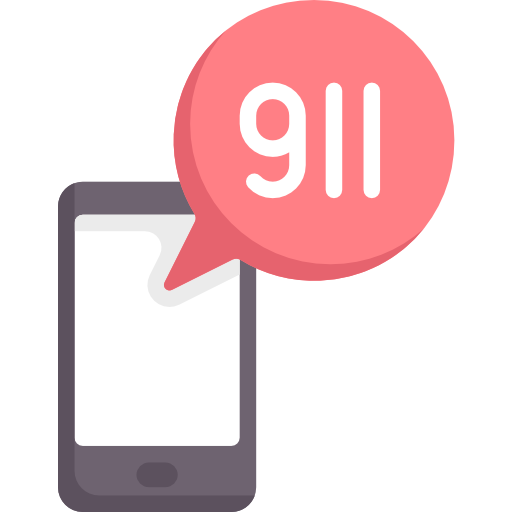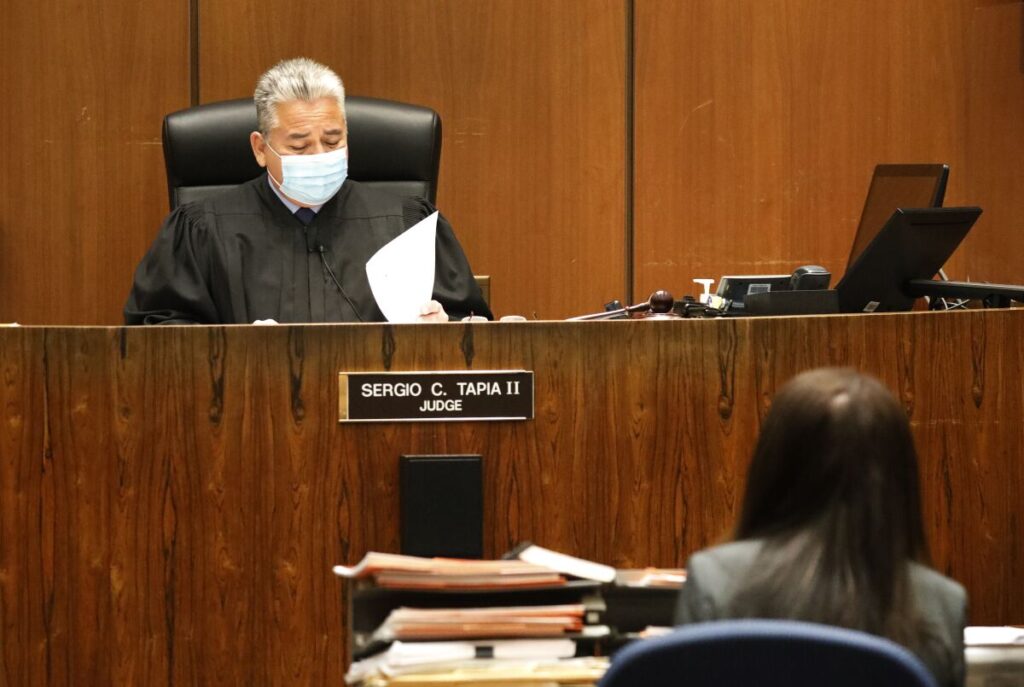How to report stalking including cyberstalking and get an Order of Protection in New York
Recently updated on June 6th, 2025 at 06:42 pm
Stalking is generally defined as being followed without permission, and now there is online stalking of surveilling activities online.
In New York stalking is a crime i.e. you can report it to the police and they will take legal action against the person stalking you. However proving that someone is stalking you can be difficult and something that might be simpler is to get a restraining order against that person which requires less evidence.
Stalkers use many tactics, such as:
 Making unwanted phone calls or texts
Making unwanted phone calls or texts
 Approaching the victim or showing up in places when the victim does not want them to.
Approaching the victim or showing up in places when the victim does not want them to.
 Following and watching the victim.
Following and watching the victim.
 Sending unwanted photos, emails, and messages through social media.
Sending unwanted photos, emails, and messages through social media.
 Sending unwanted gifts.
Sending unwanted gifts.
 Using technology to monitor, track, and/or spy on the victim.
Using technology to monitor, track, and/or spy on the victim.
 Online Harassment: Making rude, offensive, or suggestive comments online
Online Harassment: Making rude, offensive, or suggestive comments online
 Catfishing: Using manipulative tactics, such as luring someone into a relationship, to harm them
Catfishing: Using manipulative tactics, such as luring someone into a relationship, to harm them
 Impersonation: Posting comments on social media or in chat rooms in the victim’s name
Impersonation: Posting comments on social media or in chat rooms in the victim’s name
 Monitoring: Installing a recording or monitoring device on the victim’s computer or smartphone to save their keystrokes
Monitoring: Installing a recording or monitoring device on the victim’s computer or smartphone to save their keystrokes
 Spoofing: Disguising the content of a link, email, text message, or display name to trick the receiver into giving away sensitive information
Spoofing: Disguising the content of a link, email, text message, or display name to trick the receiver into giving away sensitive information
 Phishing: Deceptively posing as a trustworthy source to trick people into giving away personal or financial information
Phishing: Deceptively posing as a trustworthy source to trick people into giving away personal or financial information
Legal Definition
In New York, stalking is defined in the state’s penal law as a course of conduct targeted at a specific person that is intended to or does cause fear, harm, or substantial emotional distress. This can include behavior such as following someone, repeatedly appearing at their home or workplace, making threats, or using electronic means to monitor or harass.
Key Elements of Stalking in NY:
- Course of Conduct: Stalking usually involves repeated actions, not a single instance.
- Intent or Knowledge: The stalker must know, or should reasonably know, that their behavior would cause fear or distress.
- Effect on the Victim: The actions must result in actual fear, substantial harm, or serious emotional distress to the victim.
Stalking Charges in NY:
Stalking offenses in New York are categorized into four degrees:
- Stalking in the Fourth Degree (§ 120.45):
- This law prohibits engaging in a course of conduct directed at a specific person that is likely to cause fear for their safety, harm, or emotional distress.
- The use of electronic devices (e.g., emails, social media, GPS tracking) to monitor or harass someone can be prosecuted under this section.
- Stalking in the Third Degree (§ 120.50):
- Escalates the offense to cases where the stalker uses technology to repeatedly threaten or harass multiple victims or violates an existing court order.
- Aggravated Harassment in the Second Degree (§ 240.30):
- Criminalizes communication through electronic means (such as phone calls, text messages, emails, or social media) intended to harass, annoy, threaten, or alarm someone. This includes sending messages of a threatening or obscene nature.
- Stalking in the Second and First Degrees (§ 120.55, § 120.60):
- Applies when electronic stalking escalates to physical harm, weapon involvement, or the perpetration of stalking in conjunction with other criminal acts.
Option 1: Call the Cops
Stalking is a crime and you can report it to your local police department (or Sheriff’s office for people living outside cities)
Cyberstalking in New York
In New York, cyberstalking is considered a type of stalking, and those accused can face misdemeanor or felony charges, known as a “wobbler.” Cyberstalking in New York is similar to traditional stalking but involves electronic communication devices. An “electronic communication device” includes the Internet, cell phones, landlines, text messages, email, fax machines, or any other type of electronic device.
In the late 1990s, the law was updated to include “electronically communicated threats” in the definition of credible threats. New York’s cyberstalking laws make it illegal to stalk someone using electronic devices, constituting a form of online harassment through the Internet’s anonymity.
The prosecutor’s decision to file charges usually depends on factors like:
- Whether the victim had already filed a restraining order,
- The defendant’s criminal history,
- Whether the stalking was related to a domestic violence case.
New laws are needed to protect people from digital abuse, but legislating the Internet can sometimes raise First Amendment concerns, especially with cyberstalking charges.
With the rise of social media and other online platforms, cyberstalking cases are becoming more common.
It’s crucial to handle these charges carefully to maintain a clean criminal record. Our Los Angeles criminal defense lawyers will provide more details below
Evidence for Crime
The Police (or Sheriff) will ask you for evidence because in order to file a case for CPC 646.9 Stalking, the state needs evidence that proves that the legal definition of stalking was met, and for that they need to prove these sub-points:
- The stalker intentionally followed or harassed someone
- The stalker did that multiple times
- The stalker threatened you which caused you to be fearful of your own or your loved ones safety
How to Report
- Call 911 if there is an emergency that requires immediate assistance from the police because the crime is in progress or just occurred, someone is pointing a weapon at someone or if there’s suspicious or violent physical activity.
- Report the local police via phone or via their website which may have a small questionnaire. Select the police department of where the incident occurred. For example if you generally live in the City of Los Angeles but experienced stalking in Burbank then call the Burbank police department.
Punishment if convicted
If convicted of stalking, the penalties are usually severe. Stalking is considered a “wobbler” offense, meaning the prosecutor can choose to charge it as either a misdemeanor or a felony.
Additionally, in cases involving special circumstances, such as a prior stalking conviction, the charge must be filed as a felony. The possible punishments for stalking are as follows:
- Misdemeanor offense: Up to one year in county jail and a $1,000 fine.
- Felony offense: Up to five years in state prison and a $1,000 fine.
- Felony interstate stalking: Up to five years in federal prison and substantial fines.
- Sentencing is influenced by factors such as the defendant’s criminal history and any other crimes committed in conjunction with the stalking offense.
If someone is convicted of stalking while a restraining order is in effect, they could face two to four years in state prison. In some cases, the defendant may also be required to register as a sex offender.
Importance of Reporting to the Police in all situations
Even if you plan to not pursue a criminal case, reporting the incident formally (which may take 10-20 minutes online at the Police Department’s official website) will help you build evidence for future. Having a concrete police report with a date, and details will strengthen your case by showing repeat pattern, and additionally serve as evidence in case you opt to get a restraining order.
Option 2: Request a Restraining Order (Order of Protection)
You can request for a restraining order against a person you suspect is stalking you. You can ask for the restraining order by itself only, or in addition to the criminal case i.e. you can do both.
There are two types of restraining orders and the appropriate one depends on your relationship with the stalker.
Evidence Needed for an Order of Protection
So if you suspect you’re being stalked you can start organizing the evidence which you can submit with the initial petition and then again at a court hearing.
- Pending Criminal Case: Judges are also more likely to issue an order if there is an ongoing criminal case, therefore it’s important to call such cases out when seeking a temporary restraining order, including any police report filed. When a judge sees that there’s a criminal case happening, they might think it means the police or the district attorney are pretty sure they can prove the crime happened, and that strengthens your claims.
- Photos of stalking: These are the most common types of evidence submitted. These can be photos of victim’s injuries inflicted by the abuser. It is helpful to add photos next to the related incident description to help create a complete picture for the judge.
- Print outs of messages, emails or transcripts of voicemail: You can take screenshots of text messages and attach them. Similarly you can print emails and attach them as pictures or PDF files. While in most cases you cannot submit digital files such as
- 911 Calls reporting the stalking: Rather than just saying you called 911 or any specific hotline, you can make your case stronger by listing the following items
- The number dialed in case of the domestic hotline
- The date and time (or approximate date and time) when the call was made
- Who made the call
- What was reported on the call
- Any specific details of the person who answer the 911 call e.g. male/female voice
- Records from Hospital or Psychologist: If you talked about the stalking to a professional, a school counselor, a shrink or a therapist, you can have them issue a record of that conversation to serve as written evidence. These could be hospital visit records, print outs from your hospital portal (E.g. mychart) showing details of your visit.
- Police reports: You can attach a copy of the police reports filed against abuser for domestic violence.
- Testimony from a Witness: A testimony is a formal written or spoken statement, especially one given in a court of law. The witness can be anyone such as a family member, neighbor a co-worker or a bystander. The testimony is just an essay written describing the incidents witnessed, with as many specifics as possible.
Steps: How do I file for an Order of Protection
The same laws apply across New York such as in Kings County, Queens, New York City, Suffolk County, Nassau County, Bronx County, Westchester County, Erie County, Monroe County, Richmond County and so on.
Step 1: Gather evidence
Gather Evidence for New York Courts
The first step is to gather evidence to support your case. What proof is required for an Order of Protection in New York? Below are examples to help you organize, though any relevant evidence that supports your claims can be used.
Please note the court will not do its own investigation. It will base its decision on the evidence you provide, and then the questions asked during the formal hearing with both the victim and the abuser present.

Criminal Case
In New York State, an ongoing criminal case indicates that the district attorney has found sufficient evidence of abuse or related crimes, reinforcing the validity of your claims in an Order of Protection request.

Photos
Photos of violence, injuries, damage
Messages
Print outs of messages, emails or transcripts of voicemail

Record of 911 Calls
For each call document the #, date, time, caller, callee details

Medical Records
Documentation of any medical emergencies or injuries or treatments resulting from abuser’s violence.

Police Report
Police reports filed against abuser for domestic violence.

Testimony from Witness
A testimony from a witness who can be a family member, neighbor a co-worker or a bystander, either in writing or in person at the hearing, describing the incidents witnessed. It could also be that you shared incident details with them when they occurred even if they were not physically present when the abuse happened.
Step 2: Fill the Court Forms
You can fill these online for free by visiting here
In order to apply for an Order of Protection, you need to fill and submit a specific set of official New York court forms. These have questions aimed at understanding your situation and the people involved.
Step 3: File the Court Forms with the Family Court
Submitting successfully is called filing, and the process involves the following
- Formally submitting the case documents at the court with the office of the clerk. This can be done in person or online. Online filing for Order of Protection in New York is simplified by LegalAtoms.
- The clerk reviews and verifies the correctness of forms and completeness of the required info
- Clerk enters the case in the court database, stamps the documents and assigns a case number
County (Venue)
The proper venue for an Order of Protection case is the county where the abuse took place or where the restrained party lives. However, venue is a defensive motion and should be considered by the court only if the restrained party objects by filing a noticed motion for change of venue at or before the time of responding to the request.
Determine the County
In New York, one typically file at the Family Court at the county (including borough in New York City) of your residence or where the abuse occurred. For example, if you live in Manhattan, then the Family Court of New York County would be your venue. There can be many special cases and fine print but that is the most common case. Please consult a lawyer if your situation is uncommon e.g. the abuser is overseas or you are overseas and the abuser is in New York state.
Identify the methods of Filing
Method # 1: In Person by visiting the court house
Your court location would accept the forms to be submitted in person at the court hours. When you submit your case documents at the court, typically you take 3 copies.
The clerks reviews it, and if everything is ok, they formally enter it into the court system and put a stamp near the top of the documents. That acceptance is called filing.
The stamp may look something like this:
Method # 2: E-file online
This is the most efficient option if you have an e-mail address and some basic computer skills like registering an account, and uploading PDF files.
Some counties now have one or more online portals where you create an account for free, and then you can upload documents and hit submit.
You will be required to some online service fees.
Method # 3: Via another person
Some counties accept filing via a friend or legal courier. These companies or individuals charge a flat or hourly fee and file the documents at the court.
Step 4: Judge Sets Hearing, Grant/Deny Temporary a Order of Protection
A judge reviews the case offline and then you will be notified by the court about the outcomes which are:
- Temporary Order of Protection Granted
- Temporary Order of Protection Denied
In addition the Judge would typically set a hearing. If the case doesn’t have sufficient evidence it might be dismissed without even a hearing.
The Temporary Order of Protection (if issued) is valid until the hearing i.e. typically about 3 weeks. If the hearing is delayed for any reason, you need to check with the court to ensure the temporary order is renewed until the hearing to provide you with legal protection.
Step 5: Inform the other party formally also known as “You’ve been Served!”
You need to inform the other party as per New York laws, and this is done by Serve a set of Stamped Case Forms including Hearing Notice to them
Whenever one party initiates a restraining order it needs to inform or serve the other party formally by delivering the court documents. That step is called serving the respondent
Under the New York law there are multiple ways in which the other party can be served.
![]() You cannot serve your papers yourself.
You cannot serve your papers yourself.
Option 1: Ask the Sheriff (FREE)
 A sheriff or marshal can serve the opposing party for you which is a big help. This service is offered for FREE. To ask the sheriff to serve your papers, you must have an address or location for the abuser. If the respondent is in jail, the sheriff can serve them. If the other side is in prison in New York, prison staff, not the sheriff, will serve your papers.
A sheriff or marshal can serve the opposing party for you which is a big help. This service is offered for FREE. To ask the sheriff to serve your papers, you must have an address or location for the abuser. If the respondent is in jail, the sheriff can serve them. If the other side is in prison in New York, prison staff, not the sheriff, will serve your papers.
Option 2: Ask a friend, relative or any adult (FREE)
 You ask someone you know to be your server
You ask someone you know to be your server
- 18 or over, and
- not part of your case
Think about safety when choosing your server.
Option 3: Hire a courier for legal papers (Process Server)
 You can also hire a courier called professional process server. You can search on Yelp or Google to get a list of options near you.
You can also hire a courier called professional process server. You can search on Yelp or Google to get a list of options near you.
You cannot hire regular couriers such as UPS, FedEx or US Postal Service unless in exceptional scenarios where the judge authorizes service by mail, but that’s a whole different topic altogether.
Step 6: Present Evidence in a Court Hearing

Attend a hearing: The court holds a hearing within a couple of weeks where the evidence is examined. If there is sufficient supporting evidence as determined by a Judge, a full restraining order is issued. At this point it becomes a crime for the abuser to break the conditions of the restraining order.
Step 7. Collect the final Order of Protection
After the hearing, a final order may be issued. You can take a paper copy of the order with you. The order is typically valid for two years.
Costs – How much does it cost to get an Order of Protection
In New York, there is no fee to file for an Order of Protection in Family Court, The process is free for petitioners seeking protection from domestic violence, harassment, stalking, or other forms of abuse.
There is a small fees for filing online.
How long does it take to get an Order of Protection after I file
In New York, Family Courts typically operate Monday through Friday, 9:00 AM to 5:00 PM, with petition filings beginning at 8:30 AM. To obtain a Temporary Order of Protection on the same day, it’s advisable to file early ideally in the morning hours, otherwise the judges will review and issue the temporary order decision the following business day. (Source : NYCOURTS)
A Temporary Order of Protection (TOP) is typically valid until the next scheduled court date. The judge can extend it as needed throughout the duration of the case. If the case is resolved, the court may issue a Final Order of Protection, which can last for up to five years, depending on the circumstances.
In New York State, the hearing for an Order of Protection is usually scheduled within a few days to a few weeks after filing, depending on the court’s availability and the urgency of the situation.
- If you request an emergency Temporary Order of Protection (TOP), a judge may issue it the same day without the abuser (respondent) present.
- A full hearing, where both parties can present evidence, is typically set within a few weeks.
- If the respondent has been served but fails to appear, the judge may still issue a Final Order of Protection in their absence.
Is an Order of Protection helpful?
The purpose of an Order of Protection is to restrict the contact or proximity of one person (the respondent or alleged perpetrator) to another person (the petitioner or victim) in order to ensure the safety and well-being of the petitioner.
The specific terms of an Order of Protection order can vary depending on the circumstances of the case e.g. if the people live together then it might require one party to vacate the place.
Typically, an Order of Protection order may prohibit the respondent from
- Approaching or contacting the petitioner including via text or social media
- Staying away from the usual places petitioner is at such as home, work or school
- Prohibit stalking, or surveillance of any kind
- In situations where they lived together, provide custody or access to
- Children
- Pets
- Important documents
- Personal items such as clothes, medications, cell phones
- Cars
- Extending the protections to others living with the petitioner
Research findings on benefits of Order of Protection
Here’s the top three findings from a study on domestic violence and restraining orders from the University of New Hampshire
 Reduce Violence
Reduce Violence
Civil protective orders (such as a DVRO) are effective in reducing partner violence for many women. For half the women in the sample, a protective order stopped the violence. For the other half, the orders significantly reduced violence and abuse.
Cost Effective
They are a relatively low-cost solution, particularly when compared with the social and personal costs of partner violence.
Urban Vs. Rural
The impact of civil protective orders on reducing violence and abuse did not differ for rural and urban women. In rural areas where resources and services for partner violence may be more limited, the restraining orders hold greater importance.
Risks of an Order of Protection
It is conceivable that following the submission of a Order of Protection, the abuser particularly in domestic violence situations may react with anger due to the perceived loss of control over you and your household. In certain instances, the abuser may portray themselves as the victim and shift blame onto the actual victim they were mistreating.
The response of your abuser after the filing of a protection order is unpredictable. While an Order of Protection can provide legal protection, one should not automatically assume that it guarantees safety. The initial weeks post-filing can be particularly precarious, contingent on your abuser’s reaction.
Despite the safeguards intended by an Order of Protection, abusers may retaliate through various means, such as:
- Physical assault or violence
- Harming or taking away children
- Damaging jointly owned property
- Disregarding the order and persisting with threats, possibly through intermediaries
- Inflicting harm or causing harm to pets
- Harassing your loved ones for information
- Engaging in stalking behavior
- Initiating a retaliatory restraining order against you
- Spreading false information about you in court documents, online, or publicly
Following the submission of an Order of Protection , it’s important to continuously assess your situation and prepare for the potential escalation of your case into more violent territory.
What Restrictions can you ask the Judge For
Here are the typical restrictions places on the abuser via the Order of Protection.

Stay Away From You
Abuser would have to stay at least 100 yards away from you, your children and locations you request such as your work

Not To Contact You
Not to contact you via phone or text or mutual friends

Not Stalk You
Not stalk you or your loved ones, including your accounts on Facebook or other social media

Hand Over A Car
Get access to cars held by the abuser

Vacate The Shared Residence
The respondent can be asked to vacate the shared residence. You can also request help from police to kick them out.

Handover Passport, Cell Phone, Medications Etc.
You an ask for your personal items such as passport, medications, clothes. This would be applicable if you were living together up to now.

Don’t Post Intimate Images
Take down, delete, and do not distribute intimate images of a protected person

Restrict Abusive Litigation
This is to prevent the misuse of the legal system to harass, intimidate, or burden you.

Get Drugs, Mental Health And Sex Offender Treatment
You can request the abuser to seek treatment for alcoholism, drug use, domestic violence abuse
Resources for DV Victims
Here is a list of U.S. federal and New York state agencies that assist victims of domestic violence, along with links to their official websites:
New York State Agencies:
-
New York State Office for the Prevention of Domestic Violence (OPDV)
Leads the state’s efforts to prevent and respond to domestic violence through policy development and public awareness. -
New York State Coalition Against Domestic Violence (NYSCADV)
Provides training and technical assistance to local domestic violence programs across New York State. -
New York State Domestic Violence Program Directory
A comprehensive directory of organizations and programs offering shelter and services to victims of domestic violence in New York State. -
New York State Courts – Domestic Violence Resources
Offers information on legal resources and assistance for domestic violence victims within the New York court system. -
New York City Domestic Violence Support – Human Resources Administration (HRA)
Provides temporary housing, emergency shelter, and supportive services for survivors of domestic violence and their children in New York City.
Federal Agencies:
-
Office on Violence Against Women (OVW) – U.S. Department of Justice
Administers grant programs and supports efforts to combat domestic violence, dating violence, sexual assault, and stalking. -
National Domestic Violence Hotline
Provides 24/7 confidential support to victims of domestic violence. Call 1-800-799-SAFE (7233) or text “START” to 88788. -
Family Violence Prevention and Services Program – Administration for Children and Families (ACF)
Funds domestic violence shelters and supports services for victims and their children. -
Violence Against Women Act (VAWA) – U.S. Department of Housing and Urban Development (HUD)
Provides housing protections for victims of domestic violence, dating violence, sexual assault, and stalking.
Additional Resources:
-
Safe Horizon
The nation’s leading victim assistance organization, offering support to survivors of domestic violence, child abuse, human trafficking, and other crimes.Safe Horizon -
Sanctuary for Families
Provides comprehensive services to survivors of domestic violence, sex trafficking, and related forms of gender violence in New York City
Related Posts
Can I Appeal A Small Claims Judgment Illinois
Overview In Illinois, every party in a small claims case—plaintiff or defendant—has the right to appeal a judgment entered by a circuit-court judge. Although the small claims division is designed for speed and informality, its decisions are legally binding. If you believe the judge misapplied the law, ignored important evidence, or reached a conclusion unsupported…
Illinois Small Claims court Process Self Represented
Overview The Illinois Small Claims Court is designed for speed, simplicity, and self-representation. It handles civil disputes involving $10,000 or less, excluding interest and court costs. The process is structured to be accessible to citizens without lawyers—what Illinois courts call “pro se” litigants. By providing standardized forms, plain-language instructions, and flexible scheduling, the small-claims system…
Illinois mall Claims Court Forms Fees
Overview The Illinois Small Claims Court provides an efficient and affordable way for individuals and small businesses to resolve monetary disputes of $10,000 or less. Designed for self-represented litigants (pro se), the system simplifies traditional civil procedures through standardized forms, limited motion practice, and straightforward evidence rules. Every county follows uniform requirements based on Illinois…
What Qualifies For Small Claims Court Illinois
Overview The Illinois Small Claims Court exists to resolve civil disputes involving money claims of $10,000 or less. It provides a simple, fast, and affordable way for people to pursue justice without needing an attorney. The rules are governed by Illinois Supreme Court Rules 281–289, which simplify filing requirements, remove most formal discovery, and encourage…


 Order of Protection (OP) If you’re being abused by a current or former intimate partner or a relative by blood or marriage then you can get a Order of Protection against them with judge ordering them to stop the harmful behavior as per New York Consolidated Laws, Family Court Act – FCT § 842, § 846-a.
Order of Protection (OP) If you’re being abused by a current or former intimate partner or a relative by blood or marriage then you can get a Order of Protection against them with judge ordering them to stop the harmful behavior as per New York Consolidated Laws, Family Court Act – FCT § 842, § 846-a.  Harassment Restraining Orders These orders protect individuals from harassment, stalking, or threats from another person. They are typically issued in cases where there is no familial relationship between the parties involved. (NY Consolidated Laws, Civil Practice Law & Rules – CVP § 6340)
Harassment Restraining Orders These orders protect individuals from harassment, stalking, or threats from another person. They are typically issued in cases where there is no familial relationship between the parties involved. (NY Consolidated Laws, Civil Practice Law & Rules – CVP § 6340) In summary one has to
In summary one has to






